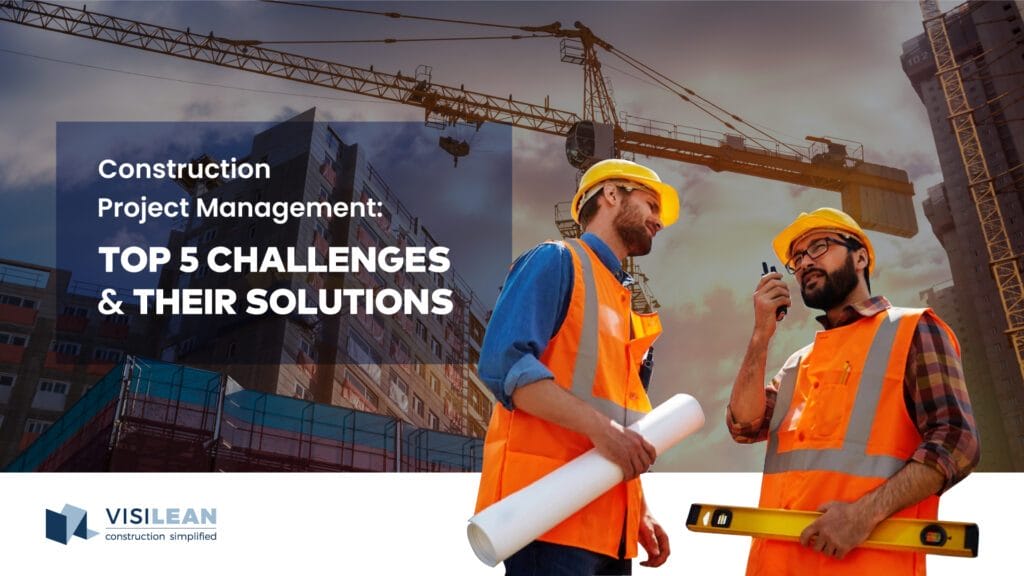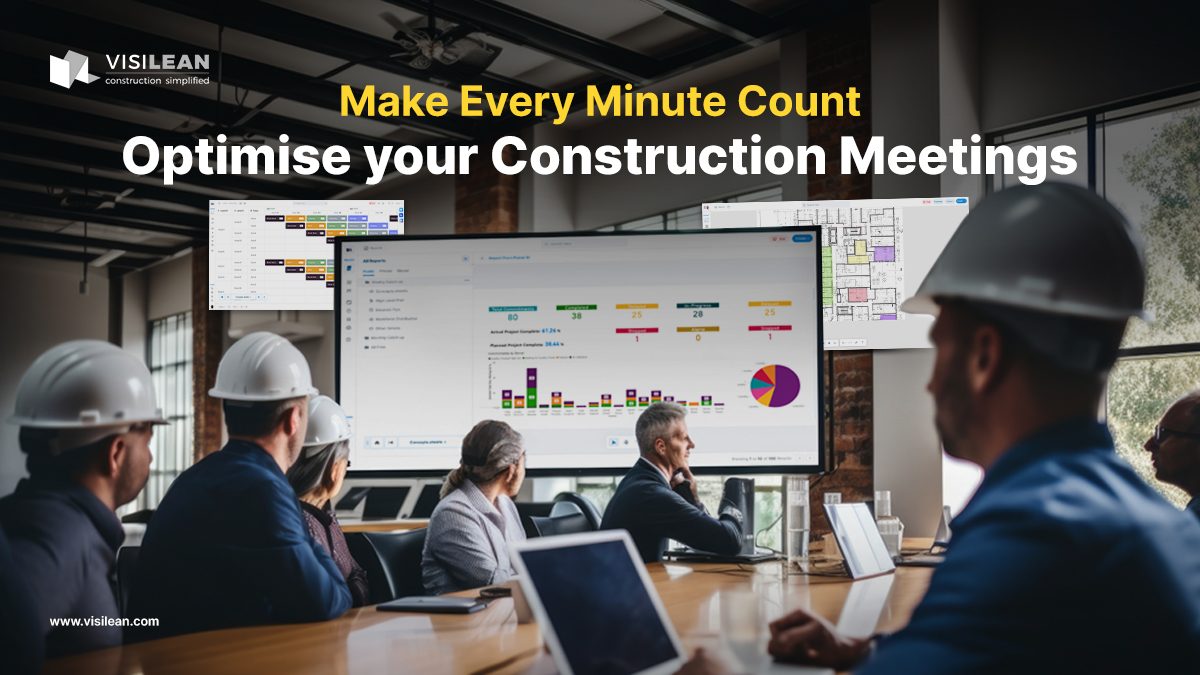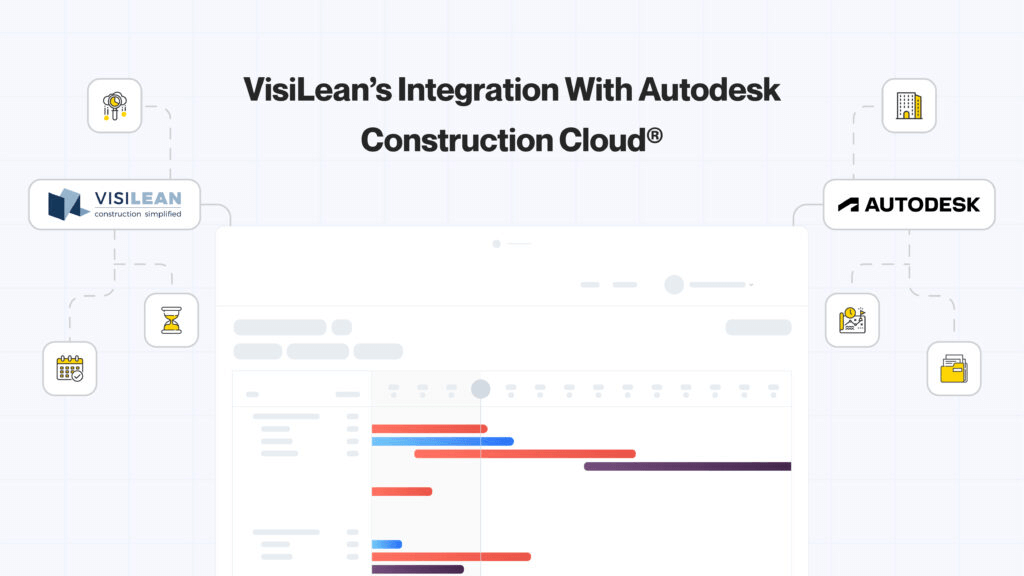Managing construction projects – however small or big – is no easy feat. Ask anyone in the construction industry, and they will tell you that it requires extensive planning and maturity. They may even tell you that an end-to-end construction management software eases the workflow. However, there is no denying the fact that the job involves a wide array of duties. They range from managing the stakeholders to procuring and allocating resources to ensuring seamless workflows. There sure are a lot of factors that add up to the successful delivery of the project. So, it does not come as a surprise that delays and budget overruns occur during a construction project.
A study by Mckinsey & Company in 2015 showed that 98% of construction projects go over budget, and 77% endure delays.
Read more
However, in 2022, there is hope. Thanks to the disruption brought on by the COVID-19 pandemic and the gradual, grudging shift to digitisation, the construction management process is undergoing a shift for the better. That said, even the most experienced people in the industry face many challenges. Every project goes through life-cycle phases. And each of these life cycle phases is rife with its own set of challenges. For more information on this, check out our previous blog; Key aspects you are missing in your Construction Project Management process. We take a look at each of them and try to find feasible solutions to overcome these challenges.
Top Challenges Faced by the Construction Industry:
- Setting the Goals
- Poor communication
- Budgeting woes
- The trouble with Scheduling
- Scope Creep
Challenge 1: Setting the Goals
As the saying goes, a strong foundation is the key to a strong building. The same philosophy works when it comes to managing construction projects. The firm foundation, in this case, is the clearly defined goals. Your goals are a gauge of your construction project management success. However, there are times when the stakeholders are not clear about what they want to build or how to go about it. Often, there are disagreements between the various stakeholders involved in the project. The result: unwanted disputes, delayed projects and a plethora of problems starting with the blame game. The first step, therefore, is to set clear and practical goals for the construction project.
The solution
An ideal construction project manager should step in and initiate discussions, schedule meetings with the stakeholders and get a sign-off to start the project. The key is to be SMART. SMART, in this context, is an acronym for the key characteristics your goals should have according to the priority- viz, Specific, Measurable, Attainable, Relevant, and Time-Bound. A SMART goal, therefore, includes the finer details. Needless to say, when compared with normal goals, smart goals are harder to achieve, but in the long run, they are more practical and result-oriented.
The purpose of setting the goals is not just to clarify the results, but to develop a detailed program of action and define how they are done stage by stage.
How does being digital help?
With the construction industry adopting digitisation, things have gotten easier now. End-to-end construction project management solutions now offer construction project planning with the Last Planner® System and Critical Path Method.
As discussed in one of our earlier blogs, “For centuries, the Critical Path Method (CPM) scheduling has been a component of the building sector and is a commonly used type of technique. A CPM plan is developed by compiling a list of operations and milestones needed to finish a project, determining the length of individual operations, and linking them together in a network of dependencies to set scheduling dates, critical routes, and general project length.”
However, the article states, “CPM is predominantly a top-down ‘ideal world’ system where real-world challenges are not addressed. Lean methods such as the Last Planner® System (LPS) are better suited to manage the project execution as they are grounded in reality and address issues through a bottom-up approach by providing components such as make-ready planning and a weekly job plan.”
A cloud-based Construction software solution like VisiLean integrates both the top-down and bottom-up planning processes. To learn more about CPM and LPS, read on
Challenge 2: Communication & collaboration
Did you know that about 90% of a project manager’s time is spent on communicating? This brings us to one of the most famous equations. More effective communication = Better project management. For effective communication, a project manager must have a clear idea of the 5 W’s and one ‘H’ in-depth. (‘What, Who, Why, Where, When, and How)
The solution
The project manager should, if need be, take ownership of initiating this conversation. And play a pivotal role in ensuring this conversation between the parties involved is effective. It is here that going digital helps immensely.
How does being digital help?
Rather than ‘post it’ notes, text messages, or other means of communication, a digital project document management and project coordination tool can ensure that all parties involved have access to the same set of information. A cloud-based construction software solution makes the ease of communication both offline and online even more seamless. This boils down to the fact that even a mobile phone or a handheld device can be used for communication. With VisiLean, you can get all your stakeholders to communicate effectively at various stages on one platform and in real time. To know more click here.
Challenge 3: Budgeting woes
Cost overruns are a norm for the construction industry. And there are many factors, both internal and external that affect the initial budgeting process.
Internal factors
- Change in scope of the project
- Ignorance or unrealistic estimates
- Inadequate project management and rebuilds
External factors
- Price escalations
- Adverse weather conditions
- Resource shortage
This brings us to one of the main challenges in the construction industry. Resource planning. Listing the main resources in a construction project is a no-brainer. A construction site, products, materials, tools, facilities, and equipment form the one set. The other set is human resources and finances. Fund management or maintaining a good cash flow is one widespread problem too.
The solution
The key is getting a steady cash flow, and for this, the funds must be managed according to plan. This brings us back to the planning process where you will have to calculate for errors. Stay on top of your estimation techniques and expense tracking. Using budgeting software or documentation software helps too.
However, if the first two challenges we spoke about is better managed, there is hope. And it is to this hope that the construction industry is holding on to.
How does being digital help?
Managing a huge amount of money requires the help of software. It is wise to invest in resource planning software, and budget management software to ease your workflows. This also allows a project manager to be on top of his game.
Challenge 4: The trouble with Scheduling
It is a given that construction schedules rarely highlight the true picture of work being executed and even for a seasoned construction professional, scheduling can be a tricky affair. We take a deep dive into the common scheduling mistakes that cost time and money. Further information can be found in our previous blog.
Unrealistic resource projection is a pertinent bane of the construction industry. During the planning phase, each company sets aside a unique available resources projection. At times, this projection takes a hit upsetting the apple cart. It could be in terms of human resources or any of the other resources we have mentioned above. There are other issues too that can pose serious challenges in the scheduling phase. Trying to meet unrealistic goals and managing time are two equally prominent issues.
Allow us to introduce the word constraint in this context. “Constraint,” says Martin Zilliacus, COO at VisiLean, “is typically a resource that is required to successfully start or complete a task. This can take the form of a physical resource, i.e., construction materials, equipment, such as cranes or concrete mixers, or a non-physical one, i.e., permit to proceed, design specification, etc. And it is how actively or proactively the project manager addresses this issue that helps solve this issue at hand.”
Read more about constraint management here.
The solution
You need to plan, prioritise and estimate your tasks thoroughly. This is one of the areas in which technology has been contributing greatly. Many construction project management solutions have efficient time management mechanisms in place. It is also good to invest in risk management construction management scheduling software and quality management software. If you get all of it in one software, that could be your perfect solution.
How does being digital help?
Collaborative Planning, Constraint Mapping, Visualising Milestones- these are the key factors that are to be monitored if you are looking at bridging the gaps between planning and scheduling. And construction management software is completely capable of doing away with this gap. It thus becomes mandatory to break the silo-based approach and allow for collaborative planning to take place.
Once the timelines and milestones are set, it will be time for visual plans and clear task cards to come into play. And this is where technology comes into play. Construction project management solutions like VisiLean allow you to see the entire life cycle in one place. Here is a detailed report on how to bridge the planning and scheduling gap that you might find informative.
Challenge 5: Scope Creep
Change is inevitable. And when it comes to construction project management, it is very common. However, if the scope of the project extends beyond the normal delays, roadblocks, or budget overruns, beware of scope creep. So, what is scope creep? In the true sense of the word, scope creep occurs when the scope of the project creeps uncontrollably beyond projected outcomes. It is vital to manage this.
The solution
Setting SMART goals helps, creating a backup plan helps, and constant communication and collaboration help too! A digital construction management solution helps a great deal in doing away with the factors that add up to creating scope creep. Being proactive helps prevent scope creep too.
How does being digital help?
An end-to-end construction solution software allows for better collaboration, frequent interactions and daily progress reports from the construction sites ensuring that scope creep does not happen. Even though technology cannot do away with scope creep it can control it to an extent.
All said and done, there is one more critical element that we have not considered. This is the innate nature of human beings resisting changes. Questions like this how we have always done it and why should we change something that works are issues that need to be addressed through knowledge sharing and training. The digitisation drive that is sweeping the construction industry now is going to be the norm soon. The awareness that if one does not join the bandwagon now, there are chances of being wiped away into oblivion must be spread.
The way forward
A major bulk of the challenges the construction project management faces can be reduced by digitisation. This is where construction project management solutions like VisiLean come into play.
VisiLean is a dedicated Lean-BIM integrated cloud-based construction project management solution with features facilitating true collaboration and seamless communication.
This is how the VisiLean workflow pans out


VisiLean helps every stakeholder involved to ease their workflow. Here is a look at how it can help these different stakeholders in the project manage their workflow.
The parting shot
A construction software solution will help you manage the challenges of a construction project more efficiently. There is no doubt about it. Covid 19, and other external factors have given construction the much-needed nudge. The future is fast evolving. Don’t be left out!
To read more interviews in our Founder’s series
Our CEO, Dr. Bhargav Dave on his future vision for VisiLean here.
Our COO, Martin Zilliacus speaks about the challenges and solving them here
Our CTO, Stefan Boddy speaks about digitisation in construction here
Want to know more about us? Head to https://youtu.be/vALoybf0zpM, or visit our website, https://visilean.com to learn about all our features!







